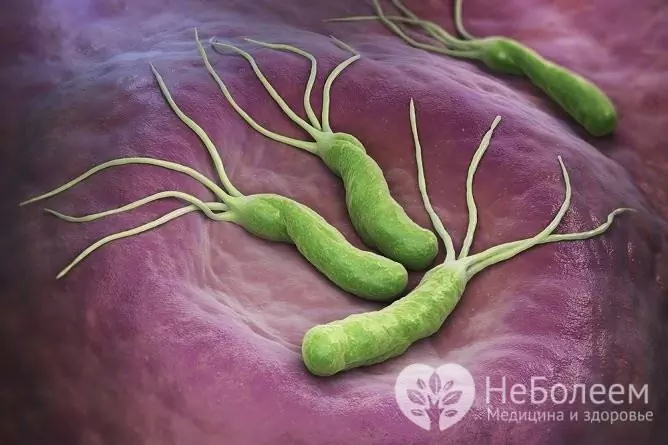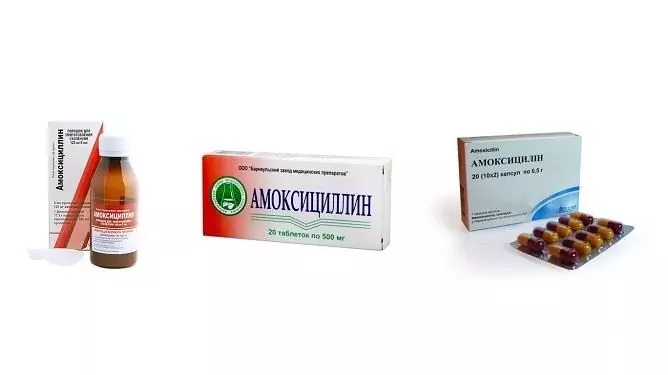- Author Rachel Wainwright [email protected].
- Public 2023-12-15 07:39.
- Last modified 2025-11-02 20:14.
Chronic gastroduodenitis
The content of the article:
- Causes and risk factors
- Forms of the disease
- Symptoms of chronic gastroduodenitis
- Diagnostics
- Treatment of chronic gastroduodenitis
- Possible complications and consequences
- Forecast
- Prevention
Chronic gastroduodenitis is a polyetiologic inflammatory disease in which the mucous membrane of the stomach and the initial part of the small intestine - the duodenum is affected.

Signs of chronic gastroduodenitis
The disease is recurrent in nature, a typical manifestation of which is the alternation of periods of exacerbation and remission (relative well-being).
Inflammatory changes in chronic gastroduodenitis can be both diffuse, diffuse, and focal in nature. In any case, regardless of the area of the lesion, against the background of the disease, a structural restructuring of the mucous membrane and glandular apparatus occurs, accompanied by a violation of the secretory and motor-evacuation functions of the stomach and duodenum.
Despite the fact that the term "chronic gastroduodenitis" is quite widespread, the International Classification of Diseases recommends dividing the concepts into chronic gastritis and chronic duodenitis. Nevertheless, most authors tend to consider chronic gastroduodenitis as a single pathology, and not as a combination of two isolated diseases. This is due to the similarity of pathogenetic mechanisms, causes, symptoms, the mutual influence of chronic gastritis on the course of duodenitis and vice versa, and a number of other factors.
The statistically significant prevalence of the disease is unknown. Presumably, more than half of the adult population has chronic gastroduodenitis; in the structure of gastroenterological pathology, 60-75% of all patients with gastrointestinal tract pathology are its carriers.
In recent decades, there has been a manifold increase in the incidence, more often men of young and mature age suffer from chronic gastroduodenitis.
Over the past few decades, chronic gastroduodenitis in children has acquired an uncontrolled growth, the number of sick children has increased 2-3 times. According to some reports, in pediatric practice, diseases of the gastroduodenal zone occupy the second place in terms of frequency of occurrence. The share of chronic gastroduodenitis in the aggregate of diseases of the gastrointestinal tract accounts for almost 45% among children of primary school age, 73% of children of secondary school age and 65% of older students. At the same time, a decrease in the relative frequency with age occurs due to an increase in the proportion of peptic ulcer disease. In terms of the frequency of prevalence, diseases of the digestive system reach their peak in adolescence - at 13-17 years for boys, at 12-16 years for girls.
Causes and risk factors
Chronic gastroduodenitis is a multifactorial disease, which means that its development is provoked by a combination of several reasons. In the opinion of most authors, the main cause of chronic gastroduodenitis is Helicobacter Pylori infection.
Helicobacter Pylori is an S-shaped, curved rod-shaped microorganism with several flagella at one end, allowing it to move actively. Helicobacter penetrates the wall of the stomach or duodenum, colonizes it and provokes a cascade of inflammatory changes. The protective mechanisms characteristic of this microorganism allow it to demonstrate high resistance to the effects of many antibacterial drugs and immune antibodies.

Helicobacter Pylori infection is the most common cause of chronic gastroduodenitis.
The aggressive environment of the upper gastrointestinal tract is theoretically unsuitable for the permanent habitation of microorganisms. Prolonged persistence of pyloric Helicobacter in the stomach cavity and the lumen of the initial sections of the small intestine becomes possible due to its ability to produce urease, a hydrolytic enzyme that catalyzes the hydrolysis of urea to carbon dioxide and ammonia, which neutralize the action of hydrochloric acid. In the process of neutralizing HCl, a comfortable alkaline environment is created around the pathogen, which allows it to actively migrate through the protective barriers of the gastric and intestinal walls. The antigens of the invaded bacteria, in turn, contribute to the development of local inflammatory changes.
Despite the fact that the infectious effect in the development of chronic gastroduodenitis is fundamental, a significant role in the development of the disease belongs to alimentary, acid-peptic, allergic, autoimmune and hereditary factors.
Non-infectious causes of chronic gastroduodenitis:
- acute stressful situations or chronic psychoemotional overstrain, leading to a violation of innervation and, as a consequence, a disorder of trophic processes in the mucous membrane of the stomach and duodenum;
- systematic use of aggressive liquids (alcoholic and carbonated drinks, drinks containing artificial colors and flavors);
- improper eating behavior (long periods of hunger, abuse of spicy, salty, fatty foods, smoking on an empty stomach and eating foods and drinks on an empty stomach that irritate the mucous membrane);
- taking gastrotropic drugs that have a damaging effect on the gastrointestinal mucosa (non-steroidal anti-inflammatory drugs, salicylic acid derivatives, glucocorticosteroid hormones);
- stagnation in the system v. portae for liver pathologies;
- chronic diseases of the gastrointestinal tract (including infectious diseases);
- unfavorable environmental conditions (according to the results of studies, the frequency of detecting gastroduodenal pathology in ecologically unfavorable regions is 3 times higher than that in calm regions);
- exposure to ionizing radiation;
- pressure on the mucous membrane of volumetric neoplasms localized in the submucosa;
- acute or chronic hypoxia (trauma, massive burns, severe heart or respiratory failure, coma);
- extensive surgical interventions (the production of hydrochloric acid - one of the factors of aggression - increases up to 4 times within 10 days after the operation);
- autoimmune diseases;
- food and other types of allergies;
- violation of hormonal regulation of secretion;
- occupational hazards (contact with heavy metal salts, pesticides, vapors of paints and varnishes, aromatic hydrocarbons);
- increased aggressiveness of gastric and intestinal contents in conditions of insufficient production of protective mucus.
Chronic gastroduodenitis is a so-called acid-dependent disease. This means that one of the fundamental mechanisms in its development is the imbalance of internal factors of aggression and defense, with the predominance of the former and the insufficiency of the latter.

60-80% have a psychosomatic component in the development of chronic gastroduodenitis
Due to the immaturity of both the central and peripheral nervous systems, a significant influence in the development of chronic gastroduodenitis in children is attributed to psycho-emotional overload, psycho-traumatic situations (the psychosomatic component is clearly traced in 60-80% of sick children). This theory is confirmed by the fact that the incidence of morbidity among schoolchildren increases as the teaching load increases from junior to middle and high schools.
Forms of the disease
There is no single classification of the disease. This is explained, in addition to the many approaches to explaining the causes and assessing the morphological picture of the disease, by the fact that in a number of countries the diagnosis of "chronic gastroduodenitis" is not used.
The following forms of the disease are most often distinguished.
By origin:
- primary (developing without connection with the previous pathology);
- secondary.
By the presence of Helicobacter Pylori: H. pylori-associated and non-associated.
By the prevalence of the pathological process:
- gastritis [limited (antral or fundus), widespread];
- duodenitis (limited (bulbitis), widespread).
By morphological signs of lesions of the stomach and duodenum:
- superficial, hypertrophic, erosive, hemorrhagic, subatrophic, mixed (determined endoscopically);
- superficial or diffuse (without atrophy, subatrophic, atrophic) (determined histologically).
By the nature of the acid-forming and secretory function of the stomach:
- with increased function;
- with a saved function;
- with hypofunction.
Depending on the stage of the inflammatory process, chronic gastroduodenitis can be in an exacerbation phase, incomplete clinical remission, complete clinical remission, clinical-endoscopic-morphological remission (recovery).
Symptoms of chronic gastroduodenitis
The symptoms of chronic gastroduodenitis are very diverse:
- pain sensations of varying duration and intensity, from mild, lasting several minutes, to acute, lasting several hours;
- dyspeptic disorders (nausea, belching, heartburn, bloating, feeling of quick satiety, decreased appetite, heaviness in the stomach, bitterness in the mouth, rumbling and feeling of transfusion in the abdomen);
- asthenovegetative symptoms (irritability, emotional lability, fatigue, intolerance to habitual physical exertion, insomnia or drowsiness, carcinophobia);
- weight loss due to decreased appetite (sometimes).

With chronic gastroduodenitis, patients suffer from pain on an empty stomach, often at night
Pain syndrome in chronic gastroduodenitis, as a rule, has a characteristic connection with food intake: pains are hungry or late in nature (1.5-3 hours after eating), sometimes at night. With the predominant localization of inflammation in the stomach, pain may occur immediately after eating. With an exacerbation of chronic gastroduodenitis, pain sensations acquire a clear localization: in the epigastrium, pyloroduodenal zone or left hypochondrium, they intensify against the background of an error in the diet (fatty, spicy, coarse, salty food, carbonated drinks, etc.), the so-called Moynigan rhythm of pain appears (hunger - pain, food intake - pain subsiding).
Diagnostics
To confirm the diagnosis of chronic gastroduodenitis, it is necessary to carry out a number of laboratory and instrumental research methods:
- diagnostics of Helicobacter Pylori (breath tests with the determination of H. Pylori waste products (carbon dioxide, ammonia) in exhaled air (HELIK test), detection of specific antibodies in blood serum by enzyme immunoassay, detection of bacterial DNA fragments using polymerase chain reaction, histological examination a tissue sample, bacteriological examination with determination of the sensitivity of Helicobacter to antibacterial drugs);
- examination of feces in order to detect digestive disorders (determination of neutral fat, undigested muscle fibers), latent blood;
- FEGDS with targeted biopsy;
- X-ray examination.

Respiratory father-in-law helps to identify the presence of Helicobacter Pylori in chronic gastroduodenitis
Treatment of chronic gastroduodenitis
The success of the treatment of chronic gastroduodenitis in most cases depends on the effectiveness of the destruction of the infectious agent that provoked the disease. The basis of eradication therapy is the implementation of three- or four-component regimens using antibacterial drugs such as Amoxicillin, Clarithromycin and Metronidazole.
Other drugs used in the treatment of the disease:
- proton pump inhibitors;
- H 2 -histamine blockers;
- gastroprotective agents;
- prokinetics;
- M-anticholinergics;
- enzyme preparations;
- antacids, anesthetics if necessary.

For the treatment of chronic gastroduodenitis, Amoxicillin is often prescribed
Possible complications and consequences
Chronic gastroduodenitis can be complicated by the following conditions:
- gastric bleeding;
- transformation into a peptic ulcer;
- malignancy.
Forecast
With timely diagnosis and complex treatment, the prognosis is favorable.
Prevention
Prevention of chronic gastroduodenitis includes primary and secondary measures.
Primary prevention:
- observance of a rational regime of work and rest;
- avoidance of excessive psycho-emotional and physical stress;
- rejection of bad habits;
- active treatment of chronic diseases.
Secondary prevention provides for anti-relapse therapy and is carried out in the periods preceding the alleged exacerbation of chronic gastroduodenitis:
- diet food;
- physiotherapy;
- screening for Helicobacter pylori infection;
- phyto- and vitamin therapy;
- reception of sub-mineralized waters.
YouTube video related to the article:

Olesya Smolnyakova Therapy, clinical pharmacology and pharmacotherapy About the author
Education: higher, 2004 (GOU VPO "Kursk State Medical University"), specialty "General Medicine", qualification "Doctor". 2008-2012 - Postgraduate student of the Department of Clinical Pharmacology, KSMU, Candidate of Medical Sciences (2013, specialty "Pharmacology, Clinical Pharmacology"). 2014-2015 - professional retraining, specialty "Management in education", FSBEI HPE "KSU".
The information is generalized and provided for informational purposes only. At the first sign of illness, see your doctor. Self-medication is hazardous to health!






